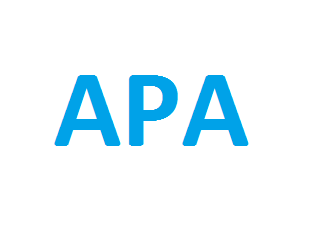
The Academic Perspective Procedia publishes Academic Platform symposiums papers as three volumes in a year. DOI number is given to all of our papers.
Publisher : Academic Perspective
Journal DOI : 10.33793/acperpro
Journal eISSN : 2667-5862
Çift Pervaneli Çok Girişli Çok Çıkışlı (TRMS) Sistemin Parçacık Sürü Optimizasyonu ve Yapay Arı Kolonisi kullanarak Parametrik Modellenmesi
Abstract
Çift pervaneli çok girişli çok çıkışlı (TRMS) sistem helikopter ile benzer dinamiklere sahip kontrol deneyleri için kullanılan bir deney düzeneğidir. TRMS’nin aşırı nonlineer olması, girişleri arasında kublaj etkisi bulması ve tüm durumlarının ölçülmemesi gibi zorlayıcı mühendislik problemleri bulunmaktadır. Sistemin model doğruluğunu arttırmak için hava sürtünmesi, atalet momenti gibi ölçülemeyen/hesaplanamayan parametrelerin optimizasyon ile elde edilmesi gerekmektedir. Bu çalışmada TRMS’nin model parametreleri, sistemin giriş çıkış verileri kullanılarak sezgisel optimizasyon yöntemlerinin performansları karşılaştırılarak elde edilmiştir. İlk olarak, TRMS yatay düzlem dinamik denklemleri elde edilmiştir. Parçacık sürü optimizasyonu (PSO) ve yapay arı kolonisi (ABC) algoritmaları ile parametre tahmini yapılmıştır. Elde edilen sonuçlar incelendiğinde PSO algoritmasının daha iyi performans gösterdiği görülmüştür.
References
[1] A. Ozdemir, I. Mucuk, and S. Ilhan, ‘Çift Pervaneli Çok Girişli Çok Çıkışlı (TRMS) Sistemin Kontrolü için Ayrık Zaman PID Kontrolör Tasarımı ve Gerçek Zaman Uygulaması’, Acad. Perspect. Procedia, vol. 3, no. 1, pp. 597–608, 2020, doi: 10.33793/acperpro.03.01.113.
[2] P. Chalupa, J. Přikryl, and J. Novák, ‘Modelling of twin rotor MIMO system’, Procedia Eng., vol. 100, no. January, pp. 249–258, 2015, doi: 10.1016/j.proeng.2015.01.365.
[3] A. V. Joseph and S. P. Arjunan, ‘Comparative Analysis of Parameter Estimation Techniques for Modelling a Twin Rotor MIMO System’, 2019 3rd Int. Conf. Recent Dev. Control. Autom. Power Eng. RDCAPE 2019, pp. 704–709, 2019, doi: 10.1109/RDCAPE47089.2019.8979083.
[4] B. Subudhi and D. Jena, ‘Nonlinear system identification of a twin rotor MIMO system’, IEEE Reg. 10 Annu. Int. Conf. Proceedings/TENCON, pp. 1–6, 2009, doi: 10.1109/TENCON.2009.5395966.
[5] S. F. Toha, I. Abd Latiff, M. Mohamad, and M. O. Tokhi, ‘Parametric modelling of a TRMS using dynamic spread factor particle swarm optimisation’, 11th Int. Conf. Comput. Model. Simulation, UKSim 2009, pp. 95–100, 2009, doi: 10.1109/UKSIM.2009.109.
[6] S. F. Toha and M. O. Tokhi, ‘ANFIS modelling of a twin rotor system using particle swarm optimisation and RLS’, 2010 IEEE 9th Int. Conf. Cybern. Intell. Syst. CIS 2010, 2010, doi: 10.1109/UKRICIS.2010.5898130.
[7] T. Dang Huu and I. B. Ismail, ‘Modelling of Twin Rotor MIMO system’, 2016 2nd IEEE Int. Symp. Robot. Manuf. Autom. ROMA 2016, 2017, doi: 10.1109/ROMA.2016.7847803.
[8] A. Rahideh and M. H. Shaheed, ‘Grey-box modelling of a non-linear aerodynamic system using genetic algorithms’, Proc. Inst. Mech. Eng. Part G J. Aerosp. Eng., vol. 225, no. 8, pp. 863–873, 2011, doi: 10.1177/0954410011403817.
[9] S. F. Toha, S. Julai, and M. O. Tokhi, ‘Ant colony based model prediction of a twin rotor system’, Procedia Eng., vol. 41, no. November 2015, pp. 1135–1144, 2012, doi: 10.1016/j.proeng.2012.07.293.
[10] Feedback Instruments Ltd, ‘Twin Rotor MIMO System Control Experiments 33- 949S Laboratory Manual’, U.K., p. 46, 2005, [Online]. Available: http://www.cpdee.ufmg.br/~palhares/33-942rotor.pdf.
[11] G. Nápoles, I. Grau, and R. Bello, ‘Constricted Particle Swarm Optimization based Algorithm for Global Optimization’, Polibits, vol. 46, no. 46, pp. 5–11, 2012, doi: 10.17562/pb-46-1.
[12] D. Bratton and J. Kennedy, ‘Defining a standard for particle swarm optimization’, Proc. 2007 IEEE Swarm Intell. Symp. SIS 2007, no. Sis, pp. 120–127, 2007, doi: 10.1109/SIS.2007.368035.
[13] M. Clerc and J. Kennedy, ‘The particle swarm-explosion, stability, and convergence in a multidimensional complex space’, IEEE Trans. Evol. Comput., vol. 6, no. 1, pp. 58–73, 2002, doi: 10.1109/4235.985692.
[14] R. C. Eberhart and Y. Shi, ‘Comparing inertia weights and constriction factors in particle swarm optimization’, Proc. 2000 Congr. Evol. Comput. CEC 2000, vol. 1, no. February 2015, pp. 84–88, 2000, doi: 10.1109/CEC.2000.870279.
[15] D. Karaboga and B. Basturk, ‘Artificial Bee Colony (ABC) optimization algorithm for solving constrained optimization problems’, Lect. Notes Comput. Sci. (including Subser. Lect. Notes Artif. Intell. Lect. Notes Bioinformatics), vol. 4529 LNAI, no. December, pp. 789–798, 2007, doi: 10.1007/978-3-540-72950-1_77.
Cite
-
 @article{acperproISITES2022ID9964, author={İlhan, Selim and Mucuk, Ibrahim and Özdemir, Ayhan}, title={Çift Pervaneli Çok Girişli Çok Çıkışlı (TRMS) Sistemin Parçacık Sürü Optimizasyonu ve Yapay Arı Kolonisi kullanarak Parametrik Modellenmesi}, journal={Academic Perspective Procedia}, eissn={2667-5862}, volume={5}, year=2022, pages={517-529}}
@article{acperproISITES2022ID9964, author={İlhan, Selim and Mucuk, Ibrahim and Özdemir, Ayhan}, title={Çift Pervaneli Çok Girişli Çok Çıkışlı (TRMS) Sistemin Parçacık Sürü Optimizasyonu ve Yapay Arı Kolonisi kullanarak Parametrik Modellenmesi}, journal={Academic Perspective Procedia}, eissn={2667-5862}, volume={5}, year=2022, pages={517-529}} -
 %0 Academic Perspective Procedia (ACPERPRO) Çift Pervaneli Çok Girişli Çok Çıkışlı (TRMS) Sistemin Parçacık Sürü Optimizasyonu ve Yapay Arı Kolonisi kullanarak Parametrik Modellenmesi% A Selim İlhan , Ibrahim Mucuk , Ayhan Özdemir% T Çift Pervaneli Çok Girişli Çok Çıkışlı (TRMS) Sistemin Parçacık Sürü Optimizasyonu ve Yapay Arı Kolonisi kullanarak Parametrik Modellenmesi% D 11/2/2022% J Academic Perspective Procedia (ACPERPRO)% P 517-529% V 5% N 3% R doi: 10.33793/acperpro.05.03.9964% U 10.33793/acperpro.05.03.9964
%0 Academic Perspective Procedia (ACPERPRO) Çift Pervaneli Çok Girişli Çok Çıkışlı (TRMS) Sistemin Parçacık Sürü Optimizasyonu ve Yapay Arı Kolonisi kullanarak Parametrik Modellenmesi% A Selim İlhan , Ibrahim Mucuk , Ayhan Özdemir% T Çift Pervaneli Çok Girişli Çok Çıkışlı (TRMS) Sistemin Parçacık Sürü Optimizasyonu ve Yapay Arı Kolonisi kullanarak Parametrik Modellenmesi% D 11/2/2022% J Academic Perspective Procedia (ACPERPRO)% P 517-529% V 5% N 3% R doi: 10.33793/acperpro.05.03.9964% U 10.33793/acperpro.05.03.9964



